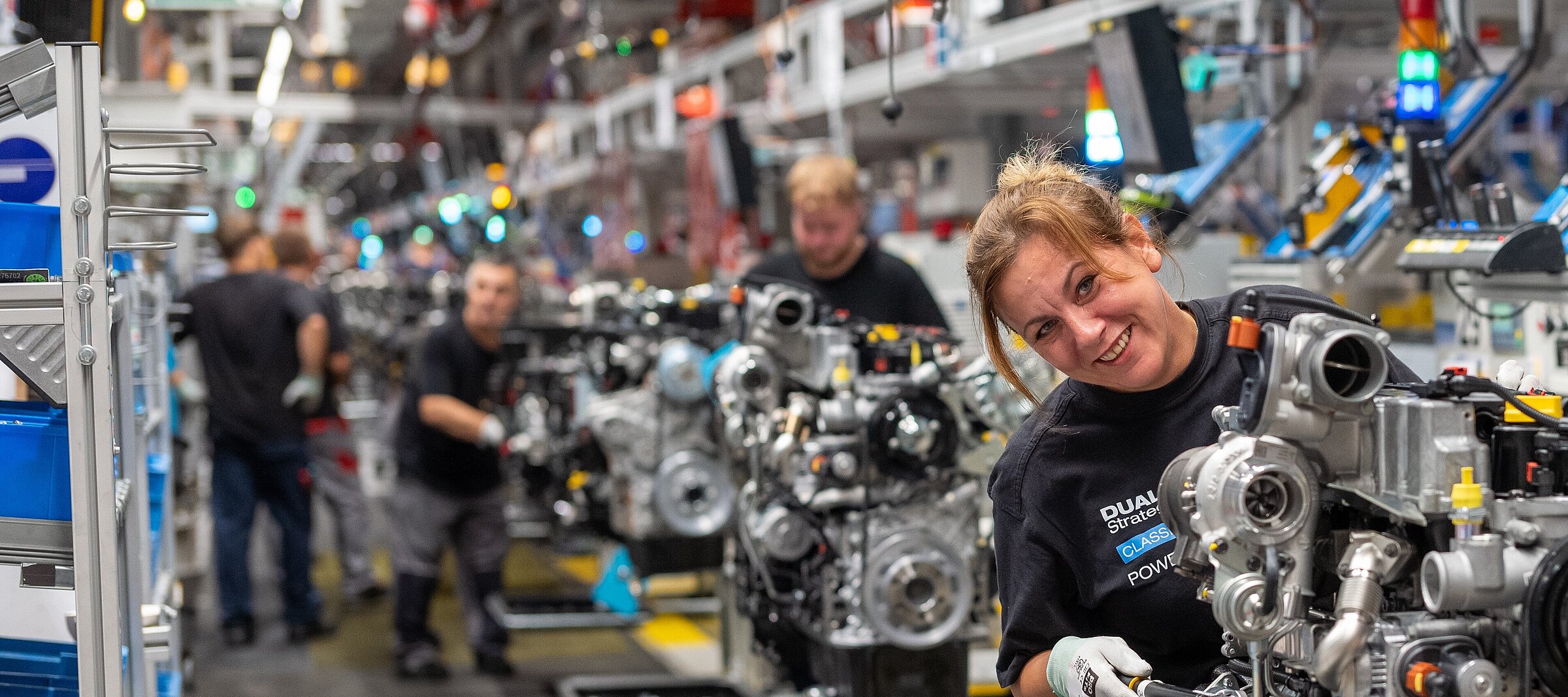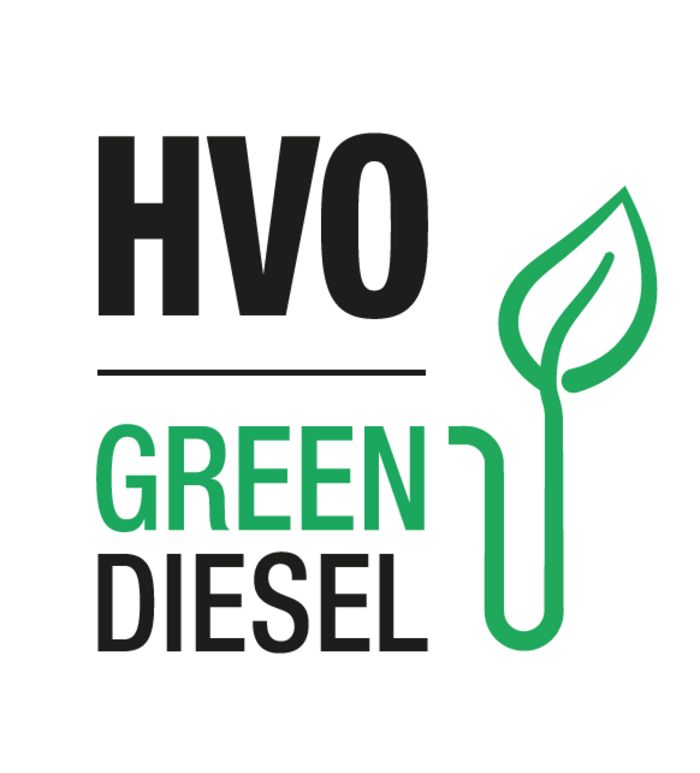
Fuels of the Future
HVO - Compatible with modern diesel engines
HVO (Hydrotreated Vegetable Oil) is a renewable fuel that helps to reduce dependence on fossil fuels and cut CO2 emissions. It can be used in all modern DEUTZ engines without modification and offers a sustainable alternative to fossil fuels.
Benefits of Hydrotreated Vegetable Oil

Climate friendly
Reduces CO2 up to 90% and reduces NOx and particulates.

No Food vs. Fuel Debate
Made from raw feedstock such as wastes, residues and fats.

Drop-In Solution
Available and ready to run, compatible with modern diesel engines.
Knowledge Hub
Hydrotreated vegetable oil (HVO) is a paraffinic diesel fuel produced from renewable resources such as vegetable oils or animal fats. It is a cleaner fuel, reducing dependence on fossil fuels and cutting CO2 emissions. It is a sustainable alternative to fossil diesel fuel and can be used in all modern DEUTZ engines without modification. There are no restrictions on the use in blends. Typically, a diesel blend with up to 26% HVO together with 7% biodiesel is available at public filling stations, which then falls under the current EN 590 diesel standard.

Essentially, many raw materials can be used as feedstock for HVO. While diesel fuel is a mixture of different petroleum-based hydrocarbons, HVO is a renewable fuel. Its chemical composition is similar to that of fossil diesel. In addition to vegetable oils, residual oils and fats are also used to produce this type of fuel.
HVO is produced industrially by hydrogenating vegetable and animal oils and fats (called triglycerides or fatty acids) in a refinery. The process is similar to the conventional refining of crude oil, but there are a number of steps required in production that may differ. It is different from FAME, which is made from oil-rich food and feed, including rapeseed, sunflower and soybean oil. So, this is not a debate about food versus fuel, but about advanced biofuels.
HVO is a pure paraffin-safe, aromatic-free diesel fuel with a similar chemical composition to fossil diesel. It can be used by all diesel vehicles and engines. With up to 90% less greenhouse gas emissions it offers the same high performance as fossil diesel while also reducing emissions of harmful substances such as hydrocarbons and other substances. In addition, its high cetane number ensures efficient and clean combustion at low temperatures. With a CFPP (Cold Filter Plugging Point) of max. - 22°C, HVO meets the criteria for winter diesel.
HVO fuel offers a number of benefits. These include
- High oxidation and storage stability, which is particularly beneficial for standby generators with long downtimes.
- The year-round cold property of - 22°C, which eliminates the need for separate winter fuel.
- The high cetane number and the chemical structure, which significantly reduce nitrogen oxide and particulate levels during operation, especially in engines without exhaust gas aftertreatment (emergency power generators).
- Cleaner and more efficient than conventional diesel, with up to 50% fewer pollutants and particulates
- The greenhouse gas reduction potential of up to 90%, enabling near CO2-neutral operation.
- Compatible with all modern diesel engines - immediately available and ready to run!
- Made from a variety of renewable feedstocks including waste, residues and grease
- 100% renewable and sustainable resources
HVO is produced from used cooking oils, residues and waste materials. FAME is usually made from oily food and animal feed products such as rapeseed, sunflower and soya bean oil.
In principle, biodiesel (FAME) and HVO can be produced from the same raw materials. Biodiesel is produced by chemical transesterification. In this process, the triglyceride - i.e. the oil - is converted into biodiesel and glycerine with the help of methanol. HVO is produced by the large-scale hydrogenation of triglycerides with H2. Bio-propane is also produced here as a by-product.
For biodiesel, mainly domestic products and cultivated biomass are used, while residual materials are used for HVO.
In contrast to biodiesel, the paraffinic structure of HVO differs only slightly from fossil diesel. With a cetane number of over 70, HVO burns cleaner than conventional diesel (cetane number of 45 to 53), produces significantly fewer emissions and leaves much less residue in the engine. HVO has a particularly long shelf life due to its high oxidation resistance. The very good cooling properties enable year-round operation.
Almost all modern DEUTZ engines are already approved for HVO in accordance with the current EU V emissions standard. CO2-neutral operation is therefore already possible today. HVO fulfils the requirements of EN 15940, and all modern DEUTZ diesel engines that meet the EU IV and V emission standards are approved for operation with HVO. With the new version of the 10th BImSchV**, HVO will be available across the board in Germany from May 2024.
The use of HVO and the medium-term addition of so-called eFuels (e-diesel) are one of the main pillars of sustainable climate protection in off-road applications.
** 10th BImSchV: Ordinance on the quality and labelling of fuels and combustibles
You can find a list of all suitable engines here.

The production capacity for HVO fuel in Europe today is already around 10 million tonnes. In many European countries, this fuel has been available for years.
With the new version of the 10th BImSchV**, this fuel will also be available nationwide at petrol stations and in the mineral oil trade in Germany from May 2024. In recent years, the production of HVO in the European Union has increased significantly. Namely from 0.5 billion litres better 0.5 million tonnes in 2011 to 4 billion litres better 4 million tonnes in 2021. The trend is still rising. A production volume of 30 billion litres better 30 million tonnes is expected for 2025.
In addition to pure HVO, an admixture of 26% HVO to fossil diesel is also permitted under EN 590 for diesel fuel.
Engines must be approved by the manufacturer for the use of 100% HVO. If the HVO diesel blend fulfils EN 590, all diesel engines are approved.
** 10th BImSchV: Ordinance on the quality and labelling of fuels and combustibles
HVO is made from 100 percent renewable resources, ensuring that carbon emitted during combustion is offset as part of a cycle. Due to the use of some fossil hydrogen and the carbon emissions in the logistics chain, not all CO2 can be avoided, with the reduction reaching up to 90 percent1.
1Based on the EU’s Renewable Energy Directive (RED II – 2018/2001/EU)
Using HVO instead of fossil diesel significantly reduces CO2 emissions over the entire life cycle of the fuel. HVO offers a CO2 reduction of up to 90% compared to fossil diesel. The remaining 10% of HVO's emissions come mainly from transport and the production process, where grey hydrogen is currently added. If green hydrogen and sustainable fuels were used in transport, it could be 100% in the future. The fuel itself is 100% CO2-neutral.
In addition, there are also significant reductions in particulates (up to 50%), hydrocarbons and nitrogen oxides, especially in older engines without exhaust gas aftertreatment.
HVO is the fastest way to protect the climate, which we can already implement now.
No engine modification is required to use HVO. This means that switching to HVO fuel requires no additional investment. In addition, the fuel can be blended with fossil diesel in any ratio. Pure HVO operation is also possible. Unlike fossil diesel, hydrotreated vegetable oil is less sensitive to cold. This avoids flocculation and the need to switch between summer and winter diesel. There is also less corrosion of key engine components because the fuel contains no aromatics. HVO fuel therefore has a longer service life. Furthermore, the fuel does not tend to develop bio-cultures, the so-called "diesel pest". Compared to conventional diesel, there is also no difference in performance.
The XTL symbol is marked on the petrol pumps, in the operating instructions and on the fuel filler cap of modern cars and trucks approved for the HVO. The labelling requirement does not apply to older vehicles and mobile machinery. In case of doubt, the manufacturer can be contacted for clarification and lists of authorised vehicles are available online from HVO dealers.
The user manual and fuel filler cap of modern cars and lorries approved for HVO are marked with the XTL symbol. Mandatory labeling does not apply to older vehicles and mobile machinery. If in doubt, the manufacturer can be contacted for clarification, and lists of approved vehicles are available online from HVO distributors.

HVO can be mixed and used with fossil-based diesel in any ratio. As HVO basically fulfils all the parameters of conventional diesel fuel standard EN 590 (B7) apart from density, fuels containing up to 26 percent HVO are already available at public filling stations (add 7 percent biodiesel and that amounts to 33 percent renewable content in diesel). These fuels can be used in all diesel engines without restriction.
HVO is an advanced biofuel. The Renewable Energy Directive RED II (EU 2018/2001) of December 11, 2018 defines in Annex IX, parts A and B, which raw materials are permitted in order to avoid any debate around food vs. fuel. In addition, the use of palm oil in biofuels is prohibited in Germany and the EU.
HVO is made from 100 percent renewable resources, ensuring that carbon emitted during combustion is offset as part of a cycle. Due to the use of some fossil hydrogen and the carbon emissions in the logistics chain, not all CO2 can be avoided, with the reduction reaching up to 90 percent1.
1Based on the EU’s Renewable Energy Directive (RED II – 2018/2001/EU)
Global HVO production capacity is currently 10 million tonnes and rising, enough to cover current demand in Germany’s agricultural more than sector six times over1.
1Use of renewables in agricultural machinery. KTBL (2023)
HVO complies with the EN 15940 standard for paraffinic diesel fuels.
The high cetane number ensures efficient and clean combustion. HVO has good low-temperature stability, meeting the criteria for winter diesel with a CFPP of max. -22°C. In addition, it is free of aromatics and can be stored for long periods of time without any loss of quality or increase in water content.
HVO is produced from 100% renewable resources, so that the carbon produced during combustion is offset in a cycle. Due to the use of some fossil hydrogen and carbon emissions in the logistics chain, not all CO2 can be avoided, with reductions of up to 90%.
The global HVO production capacity is currently 10 million tonnes and rising, enough to meet the current demand of the German agricultural sector more than six times over.
1Based on the EU Renewable Energy Directive (RED II - 2018/2001/EU)
This is not a problem. In general, all modern engine families, as well as most older engine series, are approved for paraffinic fuel to EN 15940. This includes HVO.
In fact, there are advantages to its use:
- Due to its chemical structure, HVO has excellent oxidation behaviour in contrast to biodiesel and therefore long storage stability.
- Cold weather performance equivalent to winter diesel
- The use of HVO reduces CO2 emissions by up to 90%.
- For engines without EAT, exhaust emissions are reduced, especially particulates.
Although the EN 15940 specification for paraffinic diesel/HVO would allow up to 7% biodiesel content, pure HVO is generally sold. This should be guaranteed by the supplier as the storage stability of HVO/biodiesel blends tends to deteriorate.

DEUTZ opens first HVO filling station at its factory site in Cologne
All diesel-powered vehicles of DEUTZ AG can now be refueled at the site with HVO.
Read more